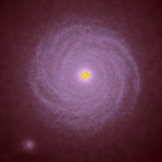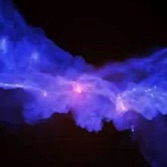
My first research activity is to perform N body simulations of the universe as a whole, using the Adaptive Particle Mesh code Ramses. The objective is to model the non-linear dynamics of dark matter with exquisite accuracy, to be able to predict the mass distribution in the universe from the current LCDM theoretical paradigm. These theoretical predictions will be used in large scale galaxy surveys such as the one performed by the Euclid satellite to measure with great precision the cosmological parameters and shed light on the nature of dark energy and dark matter.


My second research topic is to develop a theory for galaxy formation in general, and explain the origin of the Milky Way in particular. I use initial conditions from the observed primordial universe, and I run complex simulations of self-gravitating gas physics to obtain, from first principles, rotating, star forming spiral discs similar to galaxies that astronomers observe nearby. We still don’t understand many properties of galaxies, especially the crucial role played by stellar explosions and supermassive black holes related phenomena to self-regulate the formation of stars.
My last research objective is to understand the origin of stars. For this, I run complex simulations of turbulent molecular clouds, with a strong emphasis on the magnetic fields and the infrared radiation. With my collaborators, I have developed from scratch a new MHD solver for the Ramses code, to model compressible MHD turbulence, and follow the collapse of dense cores into proto-stars. Each individual star is modeled using a complex scheme called “sink particle algorithm” that allows to compute the statistical properties of stars inside star clusters.
